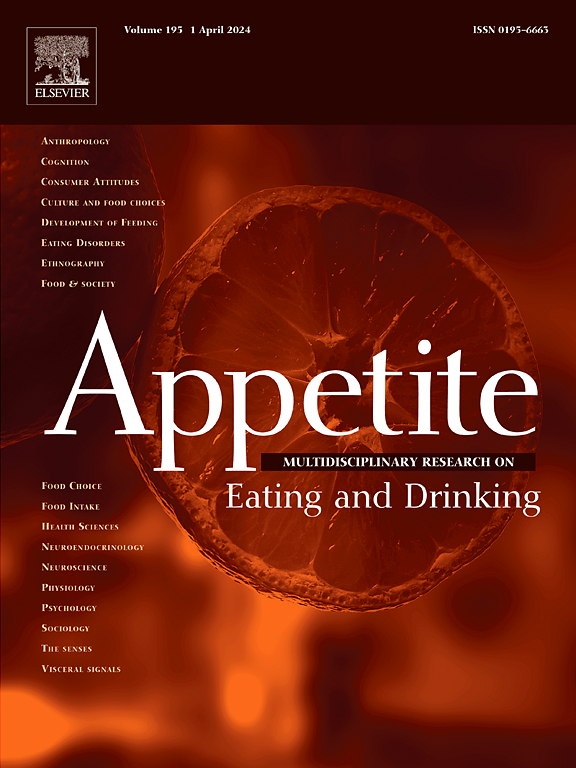神经性贪食症网络层次结构模式的破坏揭示了大脑信息整合障碍
IF 3.8
2区 医学
Q1 BEHAVIORAL SCIENCES
引用次数: 0
摘要
人脑的分层组织是一条横跨感觉运动皮层和跨模态皮层(指整合多模态感觉信息并参与复杂认知功能的皮层)的连续轴线。以往的研究表明,神经性贪食症(BN)患者的几个特定网络出现异常,这可能是其多种行为缺陷的原因,但神经性贪食症患者的网络层次结构是否发生变化以及如何发生变化仍是未知数。本研究旨在探讨神经性贪食症网络层次结构的改变及其临床意义。我们应用连接组梯度分析法描绘了 59 名 BN 患者和 39 名健康对照者(HCs)的网络层次结构模式。然后,我们通过比较 BN 患者和 HC 患者每个网络和每个体素的梯度值,评估了 BN 在网络和体素层面的梯度改变。最后,我们探讨了梯度值改变与临床变量之间的关联。与普通人相比,在主梯度中,BN 患者背侧注意网络的梯度值降低,皮层下区域的梯度值升高。在次梯度中,BN 患者腹侧注意网络的梯度值降低,边缘网络的梯度值升高。从区域上看,BN 组主要梯度值或次要梯度值发生改变的区域主要位于跨模式网络,即默认模式网络和额顶叶网络。在 BN 组中,右额叶下回的主梯度值与外食行为呈负相关。这项研究揭示了BN患者紊乱的网络层次结构模式,这表明这些患者从注意力网络和皮层下区域到跨模式网络的大脑信息整合出现了紊乱。这些发现可能有助于深入了解 BN 的神经生物学基础。本文章由计算机程序翻译,如有差异,请以英文原文为准。
Disruption of network hierarchy pattern in bulimia nervosa reveals brain information integration disorder
The human brain works as a hierarchical organization that is a continuous axis spanning sensorimotor cortex to transmodal cortex (referring to cortex that integrates multimodal sensory information and participates in complex cognitive functions). Previous studies have demonstrated abnormalities in several specific networks that may account for their multiple behavioral deficits in patients with bulimia nervosa (BN), but whether and how the network hierarchical organization changes in BN remain unknown. This study aimed to investigate alterations of the hierarchy organization in BN network and their clinical relevance. Connectome gradient analyses were applied to depict the network hierarchy patterns of fifty-nine patients with BN and thirty-nine healthy controls (HCs). Then, we evaluated the network- and voxel-level gradient alterations of BN by comparing gradient values in each network and each voxel between patients with BN and HCs. Finally, the association between altered gradient values and clinical variables was explored. In the principal gradient, patients with BN exhibited reduced gradient values in dorsal attention network and increased gradient values in subcortical regions compared to HCs. In the secondary gradient, patients with BN showed decreased gradient values in ventral attention network and increased gradient values in limbic network. Regionally, the areas with altered principal or secondary gradient values in BN group were mainly located in transmodal networks, i.e., the default-mode and frontoparietal network. In BN group, the principal gradient values of right inferior frontal gyrus were negatively associated with external eating behavior. This study revealed the disordered network hierarchy patterns in patients with BN, which suggested a disturbance of brain information integration from attention network and subcortical regions to transmodal networks in these patients. These findings may provide insight into the neurobiological underpinnings of BN.
求助全文
通过发布文献求助,成功后即可免费获取论文全文。
去求助
来源期刊

Appetite
医学-行为科学
CiteScore
9.10
自引率
11.10%
发文量
566
审稿时长
13.4 weeks
期刊介绍:
Appetite is an international research journal specializing in cultural, social, psychological, sensory and physiological influences on the selection and intake of foods and drinks. It covers normal and disordered eating and drinking and welcomes studies of both human and non-human animal behaviour toward food. Appetite publishes research reports, reviews and commentaries. Thematic special issues appear regularly. From time to time the journal carries abstracts from professional meetings. Submissions to Appetite are expected to be based primarily on observations directly related to the selection and intake of foods and drinks; papers that are primarily focused on topics such as nutrition or obesity will not be considered unless they specifically make a novel scientific contribution to the understanding of appetite in line with the journal's aims and scope.
 求助内容:
求助内容: 应助结果提醒方式:
应助结果提醒方式:


